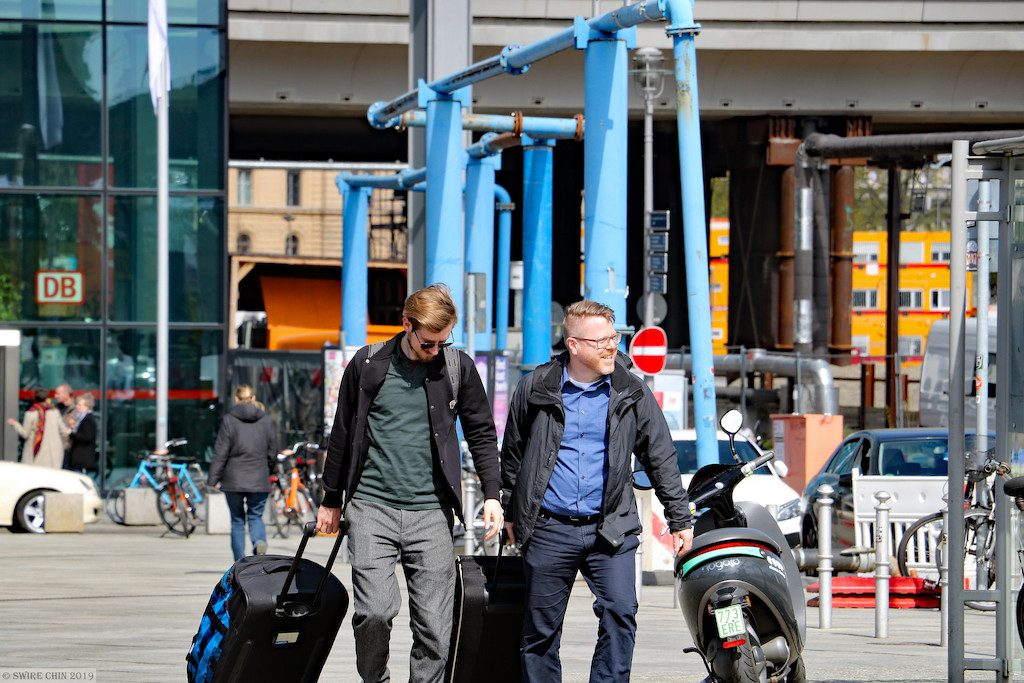Skift Take
European tourism may, broadly speaking, be in growth mode. But there is still plenty of cause for guarded optimism, particularly when it comes to Germany and the UK.
On the face of it, European tourism was still stable and growing in the third quarter of 2019. The European Travel Commission forecasts a 3 to 4 percent rate of growth in international arrivals for 2019, according to its third-quarter trend report released Wednesday.
Several key macroeconomic and political factors loom on the horizon, however, making any unguarded optimism misplaced. Year-to-date growth slowed for all reporting countries, from 4.5 percent in 2018 to 3.4 percent. In addition, various country-level issues have the potential to get worse and disrupt the market further. All in all, European tourism is stable for now, but it’s on wobbly ground.
The commission’s executive director, Eduardo Santander, seemed to note that the “growth is good” mindset isn’t sufficient to ensure the sector stays on course.
“European destinations need to develop long-term sustainable management solutions to enable tourism to flourish, rather than just merely grow. This requires constant monitoring and an adequate analysis of the tourism impact on the economy, the environment, and local communities in order to obtain actionable insights from all industry actors.”
Germany and Recession Fears
One concern, in particular, is that of Germany, a huge source market for many markets both in and out of Europe. Germany has been in the midst of an economic downturn, bordering on recession, for some time, and it appears to have had an effect on its outbound numbers. While a “lower proportion of destinations saw declines in German visitors when compared to earlier in the year,” the declines were still troubling enough.
Key markets including Cyprus, Greece, and Portugal all saw year-to-date declines from German arrivals, with Cyprus down a steep 17.9 percent. Germany is the largest western European source market for Greece, making a 7.1 percent decline on data covering January to June troubling. (Spain, which also relies on German tourists, saw a decrease in nights from German visitors, but didn’t report data for arrivals.)
In addition, central and eastern European countries Romania, Bulgaria, Slovakia, and Hungary all registered declines in arrivals from Germany. Turkey, another key source market, did not see a decline, but the report noted that “German travel to Turkey for 2019 as a whole is still likely to remain below the prior peak achieved in 2015, and it is not yet clear what scale of impact recent geopolitical events in Turkey will have on German arrivals.”
Adding to the German picture is data from travel analytics firm ForwardKeys, which told Skift it had observed a slowdown in the growth of the German outbound market, but it is still growing. In the first three quarters of 2019, outbound travel grew by 2.3 percent, while growth was 5.1 for the entirety of 2018.
Markets that registered notable increases in German travelers included Montenegro, Estonia, Slovenia, and Serbia.
The Big Brexit Question
Of course, you can’t talk about European tourism without talking about Brexit. The United Kingdom has already registered a 1 percent drop in arrivals during the period studied — and that’s before Brexit has even changed anything, other than sentiment.
While Brexit has been delayed yet again, the prospect of the UK leaving without a deal — which, despite a mighty effort by the British parliament, could still theoretically happen — is grim. The commission forecasted that such a scenario would cause a 7 percent drop in outbound trips in 2020. They added: “while a return to positive growth is expected in 2021, the pace of growth is well below baseline expectations.”
Spain would be the most impacted in terms of this drop, with a forecasted 1.3 million fewer arrivals from the UK in 2021, followed by Ireland. Brexit’s effect on inbound UK travel was expected to be not so bad, but that’s mostly due to the depreciation of the pound that is expected to happen in the event of no deal, thereby making it cheaper for travelers to visit.
Survival of the Fittest
It’s no secret that it’s been a tough time for European airlines, with Adria Airlines and Thomas Cook both folding in the month of September. This unsurprisingly has affected European travel.
The effect of Thomas Cook’s demise is likely to result in slower growth across Europe for the remainder of 2019 and is “potentially significant since Thomas Cook brings some 600,000–700,000 tourists to Turkey each year.”
Meanwhile, the collapse of Adria Airways, Slovenia’s erstwhile flag carrier, means the loss of direct connections with 24 countries, as well as “almost all seat capacity from Austria to Slovenia, almost 88 percent from Germany to Slovenia, and just over half from France to Slovenia.” Other carriers are expected to fill in the gaps soon, but not without consequences.
Bright Spots
Balkan countries continued their ascendence, with Montenegro seeing the highest growth rate in arrivals of all reporting countries at 18.1 percent arrival gain based on data to August. Turkey also saw a gain of 14.7 percent, thanks in part to a weak lira.
The Netherlands also registered growth of 7.4 percent, particularly to Amsterdam, though that may or may not be viewed as a good thing. The report noted that this came “despite efforts to entice tourists away from the capital to other cities. However, as of next year, an overnight stay in Amsterdam will cost an additional €3 per person per night for hotel stays in addition to the current tourist tax of 7 percent of the nightly hotel rate.”
The only reporting countries to register declines in arrivals were the UK, Iceland, Greece, and Romania.
The Daily Newsletter
Our daily coverage of the global travel industry. Written by editors and analysts from across Skift’s brands.
Have a confidential tip for Skift? Get in touch
Tags: brexit, europe, thomas cook, tourism
Photo credit: German travelers in Berlin. Can Pac Swire / Flickr
